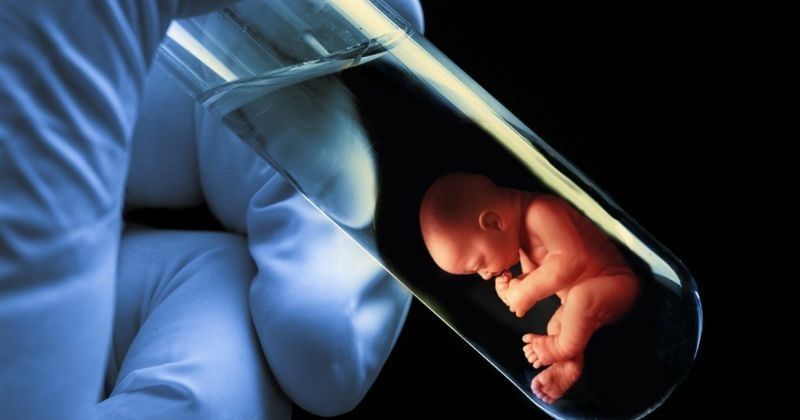The concept of test tube babies has been a topic of debate for decades. It is a term used to describe babies that are conceived outside the human body, in a laboratory dish. While the idea may seem futuristic and unconventional, it is a reality for many couples struggling to conceive naturally. In this article, we will explore the process of how test tube babies are developed, from start to finish.
Table of Contents
What is IVF?
The most common method used to create test tube babies is In Vitro Fertilization (IVF). IVF involves the fertilization of an egg outside the body, in a laboratory dish. The process starts with the stimulation of the ovaries to produce multiple eggs. The eggs are then harvested and mixed with sperm in the laboratory.
 Source: bing.com
Source: bing.comThe fertilized eggs, also known as embryos, are left to grow and develop in the laboratory for 3-5 days. During this time, the embryos are monitored closely for signs of growth and development. Once the embryos have reached a certain stage, they are transferred back into the woman’s uterus, where they will hopefully implant and develop into a healthy pregnancy.
Who Can Benefit from IVF?
IVF is a popular fertility treatment option for couples struggling to conceive naturally. It can be used to treat a range of fertility issues, including:
- Blocked or damaged fallopian tubes
- Low sperm count or motility
- Endometriosis
- Unexplained infertility
IVF may also be recommended for individuals or couples who have genetic disorders or concerns about passing on hereditary diseases to their children.
The IVF Process
The IVF process can be broken down into several stages:
- Ovarian Stimulation – The ovaries are stimulated to produce multiple eggs through the use of fertility medications.
- Egg Retrieval – The eggs are harvested from the ovaries using a needle guided by ultrasound.
- Fertilization – The eggs are mixed with sperm in the laboratory to create embryos.
- Embryo Culture – The embryos are left to grow and develop in the laboratory for 3-5 days.
- Embryo Transfer – The embryos are transferred back into the woman’s uterus, where they will hopefully implant and develop into a healthy pregnancy.
The exact process may vary depending on the individual, their fertility issues, and the clinic performing the procedure.
Risks and Side Effects
As with any medical procedure, there are risks and side effects associated with IVF. Some of the most common side effects include:
- Bloating and discomfort
- Headaches
- Mood swings
- Hot flashes
- Cramping
There are also risks associated with the use of fertility medications, such as ovarian hyperstimulation syndrome (OHSS), which can cause severe abdominal pain and bloating, nausea, and vomiting.
Success Rates
The success rates of IVF can vary depending on several factors, including the age of the woman, the cause of infertility, and the number of embryos transferred. On average, the success rate for IVF is around 30%, although it can be as high as 50% in some cases.
Conclusion
In vitro fertilization, or IVF, is a popular fertility treatment option for couples struggling to conceive naturally. The process involves the fertilization of an egg outside the body, in a laboratory dish. While there are risks and side effects associated with IVF, the success rates can be high, making it a viable option for many couples. If you are struggling with infertility, it is important to speak with your healthcare provider to determine the best course of treatment for your individual needs.
Frequently Asked Questions
- What is the success rate of IVF?
- What are the risks associated with IVF?
- Who can benefit from IVF?
- What is the IVF process?
- Is IVF expensive?
The success rate of IVF can vary depending on several factors, including the age of the woman, the cause of infertility, and the number of embryos transferred. On average, the success rate for IVF is around 30%, although it can be as high as 50% in some cases.
Some of the most common risks and side effects associated with IVF include bloating and discomfort, headaches, mood swings, hot flashes, and cramping. There are also risks associated with the use of fertility medications, such as ovarian hyperstimulation syndrome (OHSS), which can cause severe abdominal pain and bloating, nausea, and vomiting.
IVF is a popular fertility treatment option for couples struggling to conceive naturally. It can be used to treat a range of fertility issues, including blocked or damaged fallopian tubes, low sperm count or motility, endometriosis, unexplained infertility, and genetic disorders or concerns about passing on hereditary diseases to their children.
The IVF process involves several stages, including ovarian stimulation, egg retrieval, fertilization, embryo culture, and embryo transfer. The exact process may vary depending on the individual, their fertility issues, and the clinic performing the procedure.
IVF can be expensive, with costs ranging from $10,000 to $15,000 per cycle. However, many insurance plans now cover some or all of the cost of IVF, so it is important to check with your provider to see what coverage is available to you.
